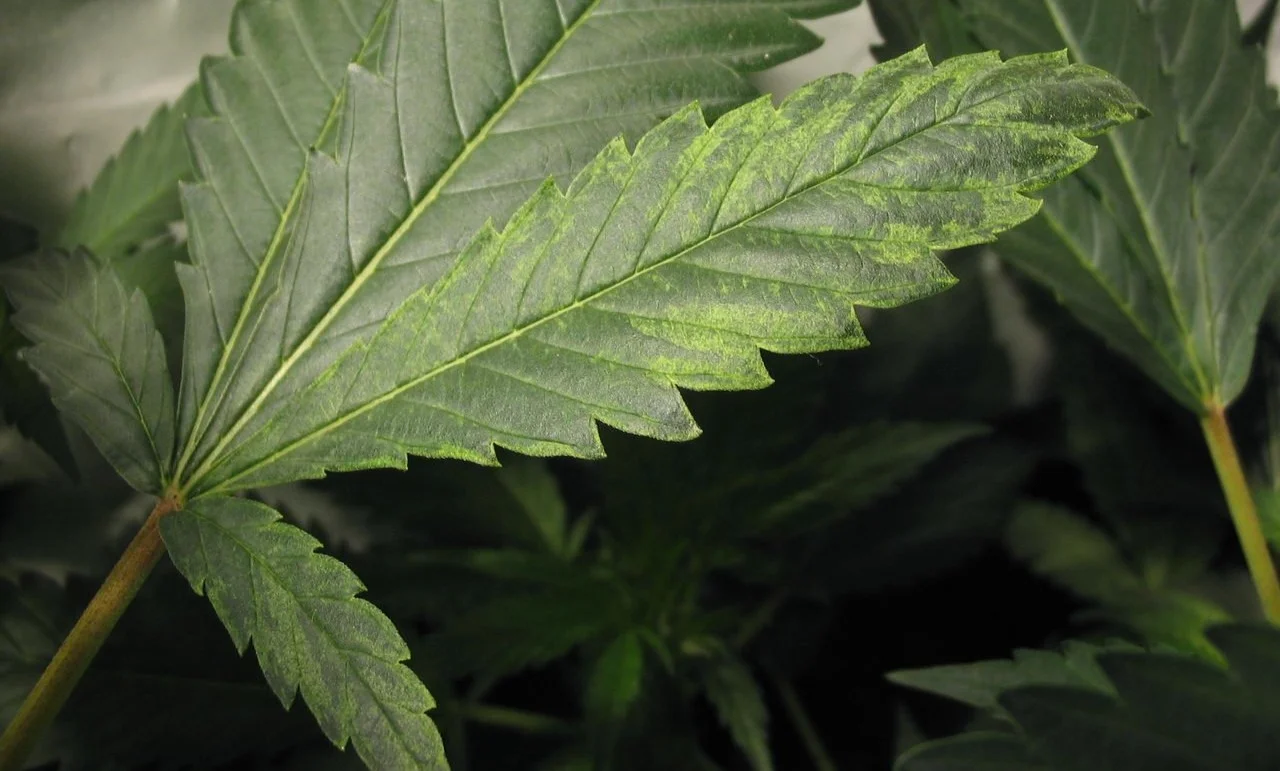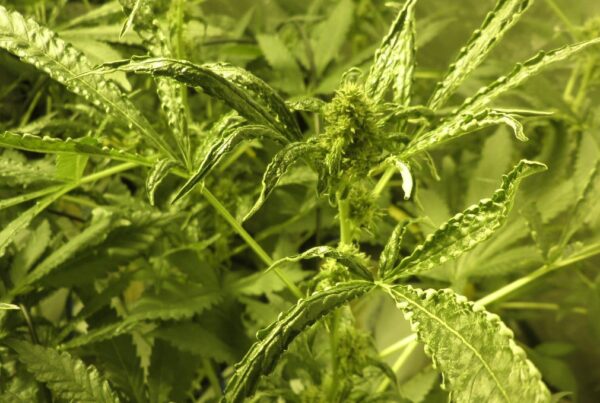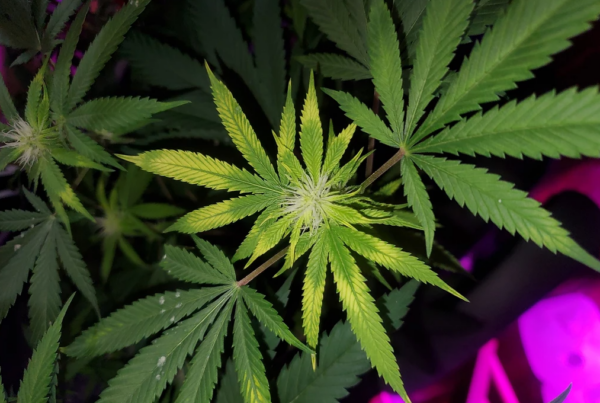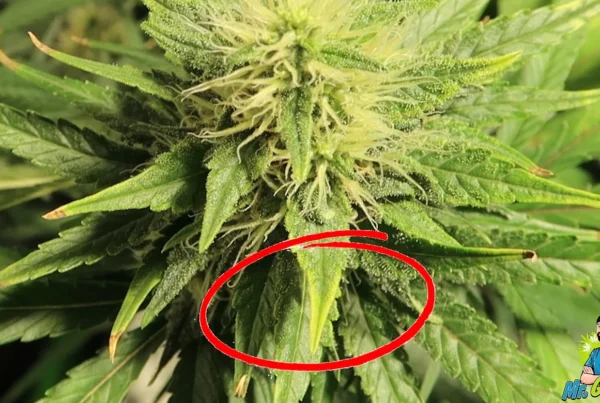Variegation in cannabis plants (or plants in general) simply means that certain parts of the plant such as leaves and stems vary in color from what is considered normal. For instance, if a plant has green leaves all over except for one part of the plant that grows white leaves, then it can be considered variegation. Genetics can be a cause of variegation, but it is certainly not the only cause. In cannabis plants, variegation manifests itself as two-toned leaves and also albinism. Variegation cannot be treated or prevented since genetic mutation can be the cause. As for pros and cons, this guide will help you uncover what variegation brings to you as a benefit and what challenges it poses. This guide will also help you understand the causes and types of variegation in cannabis plants.
What is Variegation?
Variegation is the name given to the phenomena where a certain part of the plant differs in color from the rest of the plant. This includes having two different colors on the same leaf. Since the affected part is paler, it stands out or draws attention. Variegation can be genetic, random, or pathological.
What Causes Variegation In Cannabis Plants?
Variegation is not usually induced and is caused by cell mutation or a virus affecting the plant. It can also be completely random. Whatever the cause may be, the underlying pattern is the same; one part of the plant is paler or different compared to the normal plant color because that specific part lacks chlorophyll, the pigment that gives plants their green color. When the cause is genetic, the plant shows a very distinctive pattern. When the cause is due to a virus, no distinctive pattern can be seen.
Variegation can also affect cannabis plants in various forms including two-toned leaves and albinism.
Two-Toned Leaves in Cannabis Plants
Leaves having two tones is a type of variegation that can be seen in cannabis plants. It affects very few leaves, but these leaves stand out as the pattern is very peculiar. One part of the leaf is lighter than the other and this straight, no-mix pattern is a characteristic of two-toned leaves. This type of variegation can be categorized under sectorial chimera which results from mutation. This is the unstable type which means that it will not propagate genetically. In other words, there is a good chance that if you breed with the plant, the offspring will not show signs of variegation.
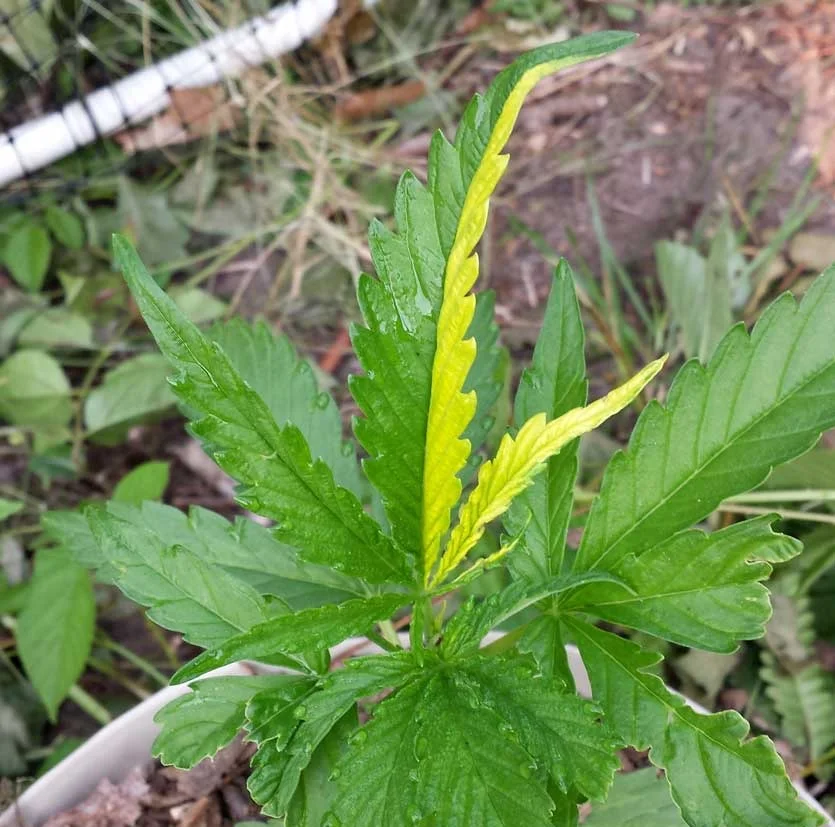
This type of variegation in cannabis plants can be fun to watch and can be appreciated as it serves aesthetic purposes. It does not have any good or adverse effects on the plant. It is not a nutrient deficiency, so don’t confuse it as one.
Albinism in Cannabis Plants
Some growers are skeptical of albinism existing naturally in cannabis plants, but it is definitely not a myth. Albinism in cannabis plants means that a certain part of the plant has no chlorophyll at all, hence, the affected area looks white. The plant does not need to be fully white to be albino; in fact, a full white cannabis plant is a rare occurrence. This genetic anomaly is certainly not beneficial as chlorophyll is required for plants to photosynthesize. A full albino plant will not survive for long and if most of the plant is albino, you cannot expect it to have high concentrations or levels of cannabinoids.
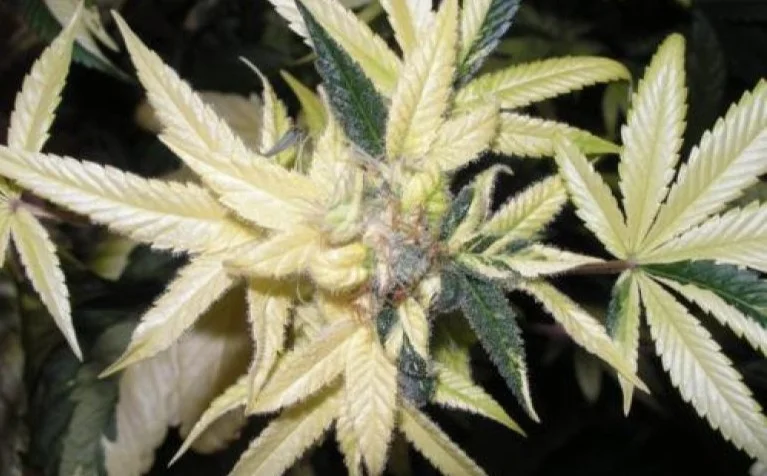
Although genetics are responsible for albinism in cannabis plants, it could be triggered by hybridization. Albinism is a recessive trait and needs some kind of trigger to tease it out – hybridization does just that. Hybridization brings out the recessive traits when breeders backcross strains and albinism is one of them. But ultimately, this trait does not bring any benefit in terms of bud potency. You might be able to capture a few pictures to show it off though!
Tobacco Mosaic Virus (TMV)
Variegation can also have pathological causes. But in this case, variegation does not show any peculiar patterns. One of the viruses that cause pale color markings on cannabis leaves is the tobacco mosaic virus (TMV). TMV causes leaves to develop uneven yellow stripes, but unlike variegation caused by genetics, this one is not completely harmless. TMV also causes leaves to twist and curl. A lot of research is required when it comes to TMV in cannabis plants and many growers simply deny its existence in cannabis.
Variegated plants may catch your attention since they look unique, but they do not have any advantage over normal plants. In fact, they have a disadvantage of a lack of chlorophyll which negatively impacts the process of photosynthesis. In the end, there is no way to treat variegation in cannabis plants because you cannot alter a plant’s genetic makeup. Have you ever come across variegation in cannabis plants? Let us know by leaving a comment below.
Sources:
- https://www.growweedeasy.com/cannabis-plant-problems/tobacco-mosaic-virus-tmv
- https://www.royalqueenseeds.com/blog-albino-weed-the-stuff-of-legend-or-scientific-fact-n722
- https://cannabistraininguniversity.com/blog/growing-marijuana/cannabis-albinism-and-its-effect/
- https://www.rxleaf.com/albino-weed-ducksfoot-weird-weed-from-genetic-mutations/
![]()

